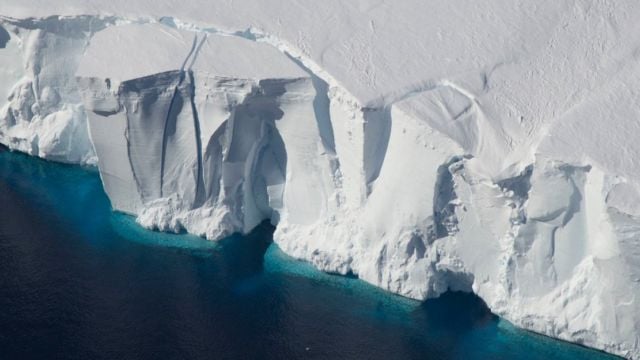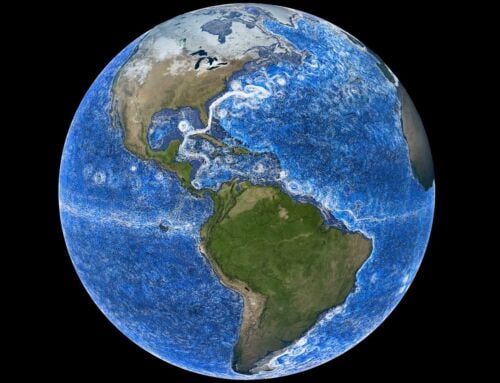An international effort by more than 60 ice, ocean, and atmosphere scientists has generated new estimates of how much of an impact Earth’s melting ice sheets, could have on global sea levels by 2100.
If greenhouse gas emissions continue apace, Greenland and Antarctica’s ice sheets could together contribute more than 15 inches (38 centimeters) of global sea level rise – and that’s beyond the amount that has already been set in motion by Earth’s warming climate.
Above: Ice shelves in Antarctica, such as the Getz Ice Shelf seen here, are sensitive to warming ocean temperatures. Ocean and atmospheric conditions are some of the drivers of ice sheet loss that scientists considered in a new study estimating additional global sea level rise by 2100. Credit Jeremy Harbeck/NASA
If greenhouse gas emissions continue apace, Greenland and Antarctica’s ice sheets could together contribute more than 15 inches (38 centimeters) of global sea level rise – and that’s beyond the amount that has already been set in motion by Earth’s warming climate.
Results from this effort are in line with projections in the Intergovernmental Panel on Climate Change’s (IPCC) 2019 Special Report on Oceans and the Cryosphere. Meltwater from ice sheets contribute about a third of the total global sea level rise. The IPCC report projected that Greenland would contribute 3.1 to 10.6 inches (8 to 27 cm) to global sea level rise between 2000 and 2100 and Antarctica could contribute 1.2 to 11 inches (3 to 28 cm).
source JPL NASA






Leave A Comment